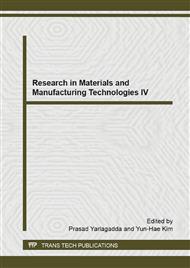p.945
p.950
p.961
p.966
p.970
p.974
p.978
p.983
p.987
Study on Calibration and Test of Automotive Wheel Hub Detection System
Abstract:
The wheel hub detection system produces error inevitably, thus it is necessary to eliminate or reduce such error so that to enhance the measurement precision. Facing the strict requirements on the precision of devices for wheel hub run-out measurement, properties, rules of emerging and contributing factors of such errors were analyzed and results showed that it was necessary to calibrate the laser ranging tester. The input-output relation was learned from the output of such ranging tester too. For non-linear errors emerged, those little errors caused by non-linear issues in actual applications shall be revised so that to reduce detection errors.
Info:
Periodical:
Pages:
970-973
Citation:
Online since:
December 2014
Authors:
Keywords:
Price:
Сopyright:
© 2015 Trans Tech Publications Ltd. All Rights Reserved
Share:
Citation:


